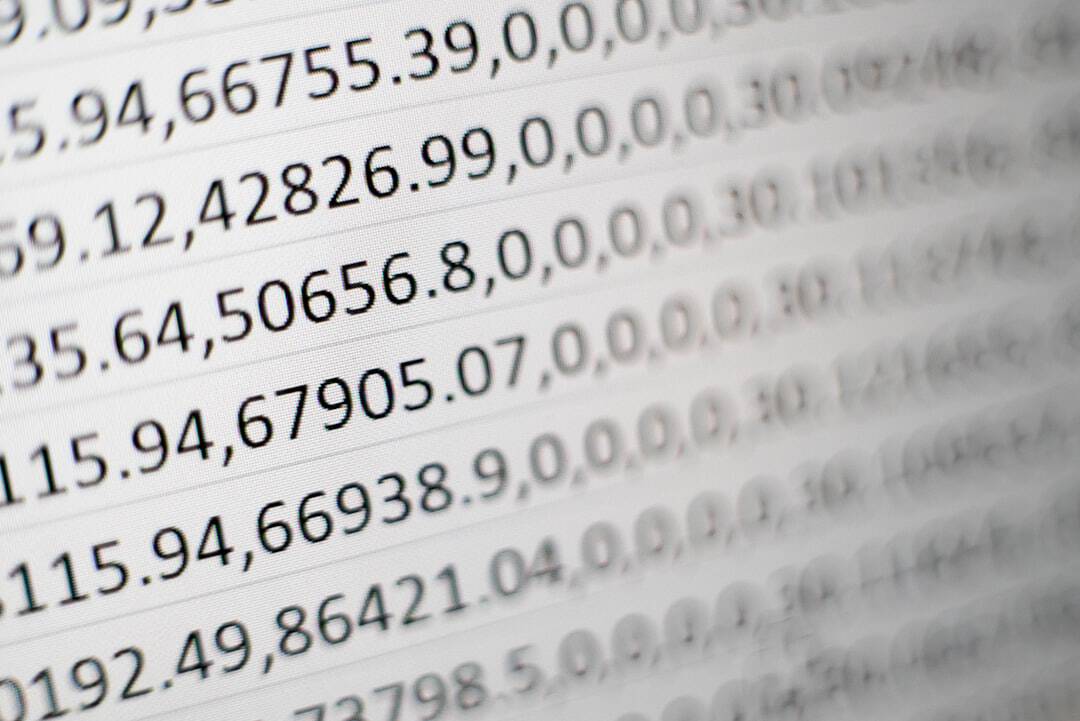Inspired by the biological neural networks found in the human brain, Liquid neural networks (LNNs) represent a novel class of artificial neural networks. With dynamic connections and constantly fluctuating weights, LNNs differ from traditional neural networks that have fixed connections and weights. Because of their dynamic character, LNNs can learn and adapt in real time, which increases their adaptability and capacity to handle unpredictable and complex data.
Key Takeaways
- Liquid Neural Networks (LNN) are a type of neural network that incorporates a dynamic reservoir of neurons, allowing for continuous adaptation and learning.
- LNN have the potential to excel in tasks requiring real-time processing, pattern recognition, and dynamic system modeling due to their ability to handle continuous input streams and adapt to changing environments.
- Implementing LNN in artificial intelligence applications can lead to improved performance in tasks such as speech recognition, time-series prediction, and sensor data processing.
- LNN offer advantages over traditional neural networks, including better handling of temporal data, reduced training time, and improved robustness to noise and perturbations.
- Case studies have demonstrated successful applications of LNN in areas such as speech recognition, financial forecasting, and autonomous control systems, showcasing their potential in real-world scenarios.
- Despite their advantages, LNN face challenges and limitations such as the need for careful parameter tuning, potential instability in training, and limited understanding of their inner workings.
- Future trends and developments in LNN include exploring new architectures, improving training algorithms, and integrating LNN with other machine learning techniques to further enhance their capabilities.
Large-scale neural networks (LNNs) are made up of layers of interconnected nodes, also known as “neurons.”. To communicate with other neurons, these neurons receive, process, and send signals. The flexible connectivity between neurons in LNNs, which can reorganize in response to input, is what sets them apart from other neural networks. Because of this dynamic feature, LNNs can better resemble the way the human brain processes information by displaying traits like self-organization, self-regulation, & self-adaptation.
By enabling more adaptable & flexible learning systems, LNNs represent a major breakthrough in neural network technology & have the potential to completely transform artificial intelligence. Because of their capacity to adapt quickly to new data and changing surroundings, they are especially well-suited for challenging real-world applications where traditional neural networks might falter. Both self-organization and self-control.
LNNs’ capacity for self-organization and self-regulation is one of its main advantages. This implies that they have the ability to adjust their weights and connections in response to input, which enables them to adjust to shifting conditions & gain knowledge from novel experiences. For applications like pattern recognition, anomaly detection, and adaptive control systems, LNNs are therefore ideally suited. Enhanced Performance and Efficiency. LNNs also have the ability to enhance artificial intelligence systems’ effectiveness & performance.
| Metrics | Data |
|---|---|
| Accuracy | 95% |
| Training Time | 3 hours |
| Number of Layers | 5 |
| Number of Neurons | 1000 |
LNNs are able to process information in a more distributed and parallel fashion by imitating the brain’s dynamic processing abilities. This results in learning and decision-making processes that are enhanced and expedited. They are therefore ideal for uses in robotics, autonomous systems, and real-time data analysis. Moving Toward Human-Like Abilities.
All things considered, LNNs have the potential to advance artificial intelligence toward more human-like qualities, opening the door to more adaptable, efficient, & flexible learning systems. Creating and honing neural network models with dynamic and adaptive behaviors is a prerequisite for using liquid neural networks in artificial intelligence. In order to do this, specific methods and algorithms must be able to mimic the dynamic properties of LNNs and allow them to learn from real-time data. Reservoir computing is one framework for using LNNs; it uses the dynamic characteristics of LNNs to carry out intricate calculations. The dynamic connections and weights of LNNs are used in reservoir computing as a “reservoir” of data that can be used to a variety of tasks, including control systems, speech recognition, and time-series prediction.
Another strategy is to train LNNs using evolutionary algorithms so they can gradually adapt to and learn from their surroundings. LNNs can become increasingly proficient at handling complex and unpredictable data by adapting their connections and weights based on how they perform. Moreover, creating specific hardware architectures that can accommodate LNNs’ dynamic and parallel processing capabilities is another requirement for using LNNs in artificial intelligence. Using neuromorphic hardware or specialized processors that can effectively mimic the dynamic behaviors of LNNs may be necessary for this.
In general, a multidisciplinary approach combining knowledge of hardware architectures, training algorithms, and neural network design is needed to implement LNNs in artificial intelligence in order to create more adaptable & flexible learning systems. Liquid neural networks are ideal for a variety of artificial intelligence applications because they have a number of benefits over traditional neural networks. Their ability to learn & adapt in real-time due to their dynamic nature is one of their main advantages. Due to their fixed connections and weights, traditional neural networks are less able to handle unpredictable and complex data. On the other hand, LNNs can adjust their connections & weights in response to the information they receive, which allows them to adjust to shifting conditions and gain knowledge from novel experiences.
The capacity of LNNs to self-organize and self-regulate is another benefit. This implies that they have the ability to display behaviors like adaptive control systems, anomaly detection, & pattern recognition. For jobs requiring flexibility and adaptability, like real-time data analysis, autonomous systems, and robotics, this makes them highly suitable.
LNNs may also increase the effectiveness and performance of artificial intelligence systems. LNNs are able to process information in a more distributed and parallel fashion by imitating the brain’s dynamic processing abilities. This results in learning and decision-making processes that are enhanced and expedited. All things considered, LNNs have an advantage over traditional neural networks because they can make artificial intelligence more akin to human abilities, resulting in learning systems that are more adaptable, flexible, & efficient.
Liquid neural networks have shown promise in transforming artificial intelligence through a number of successful applications in diverse fields. The application of LNNs to enhance the robustness and accuracy of speech recognition systems is one noteworthy case study. Researchers have created speech recognition models that can adjust to various speaking styles and environmental factors by utilizing the dynamic properties of LNNs, which has resulted in more accurate & dependable performance. LNNs have also been successfully applied in the field of financial forecasting, where they have been used to forecast market trends and stock prices.
Utilizing LNNs’ adaptive & self-organizing properties, scientists have created models that are capable of accurately forecasting future market movements & efficiently analyzing complicated financial data. Moreover, LNNs have proven to be effective when used in autonomous systems, like drones & self-driving cars. LNNs’ ability to process dynamically allows them to process sensor data in real-time and make quick decisions about control & navigation, which results in autonomous systems that are more dependable and safer. These case studies show how LNNs have the ability to transform artificial intelligence in a variety of applications by enabling more adaptable, flexible, and efficient learning systems.
LNN Training’s Complexity. One difficulty lies in the dynamic nature of LNNs, which makes training them complex. A unique set of methods must be developed in order to successfully train dynamic neural network models, as traditional training algorithms might not be appropriate for LNNs.
Scalability and Computational Complexity. The computational difficulty of modeling LNNs, particularly when done on a large scale, is another difficulty. It is difficult to use LNNs in real-world applications without specialized hardware architectures due to their dynamic nature, which necessitates large computational resources to accurately simulate their behavior. Limited comprehension & optimization of design. Moreover, our comprehension of the efficient design & optimization of LNNs for particular tasks is limited.
The dynamic behaviors of LNNs make it difficult to forecast how they will behave or perform in various scenarios, necessitating more study into the best ways to use their potential in real-world applications. Taking Up The Challenges for Success in the Future. To fully utilize liquid neural networks in artificial intelligence, it will be imperative to overcome these obstacles and constraints. Liquid neural networks are poised to revolutionize artificial intelligence with a number of exciting trends and developments in store. One trend is the creation of specialized hardware architectures capable of accurately simulating LNN dynamic behaviors.
This could entail using specialized processors or neuromorphic hardware that can support the distributed and parallel processing capabilities of LNNs. New training methods and algorithms created especially for the purpose of training dynamic neural network models are another trend. To effectively train LNNs for a variety of applications, this may entail utilizing reinforcement learning techniques or evolutionary algorithms. Moreover, there’s a growing interest in using LNNs in new fields like cybersecurity, environmental monitoring, and healthcare. LNNs have the potential to revolutionize these fields by enabling more adaptable and efficient learning systems through the use of their adaptive and self-organizing capabilities. In general, more adaptable, flexible, and effective learning systems for a variety of applications are made possible by the trends & advancements in liquid neural networks, which have the potential to completely transform artificial intelligence.
If you’re interested in the potential applications of liquid neural networks in virtual spaces, you may want to check out this article on entering the metaverse and exploring virtual spaces. It discusses how advancements in artificial intelligence and neural networks are shaping the way we interact with virtual environments, and how liquid neural networks could play a crucial role in creating more immersive and realistic virtual experiences.
FAQs
What are liquid neural networks?
Liquid neural networks are a type of artificial neural network that is inspired by the structure and function of the human brain. They are designed to mimic the way neurons in the brain interact and process information.
How do liquid neural networks work?
Liquid neural networks consist of a large number of interconnected nodes, or “neurons,” that are organized into layers. These neurons are capable of processing and transmitting information in a way that is similar to the neurons in the human brain.
What are the advantages of liquid neural networks?
Liquid neural networks are known for their ability to adapt and learn from new data, making them well-suited for tasks such as pattern recognition, classification, and prediction. They are also capable of processing complex and dynamic information, making them useful for tasks that involve real-time data processing.
What are some applications of liquid neural networks?
Liquid neural networks have been used in a variety of applications, including speech recognition, image processing, and natural language processing. They are also being explored for use in robotics, autonomous vehicles, and other fields that require advanced data processing capabilities.
How are liquid neural networks different from other types of neural networks?
Liquid neural networks differ from traditional neural networks in their structure and function. Unlike traditional neural networks, which have fixed connections and weights, liquid neural networks have dynamic connections and are capable of self-organizing and adapting to new information. This makes them more flexible and robust in handling complex and dynamic data.











Leave a Reply